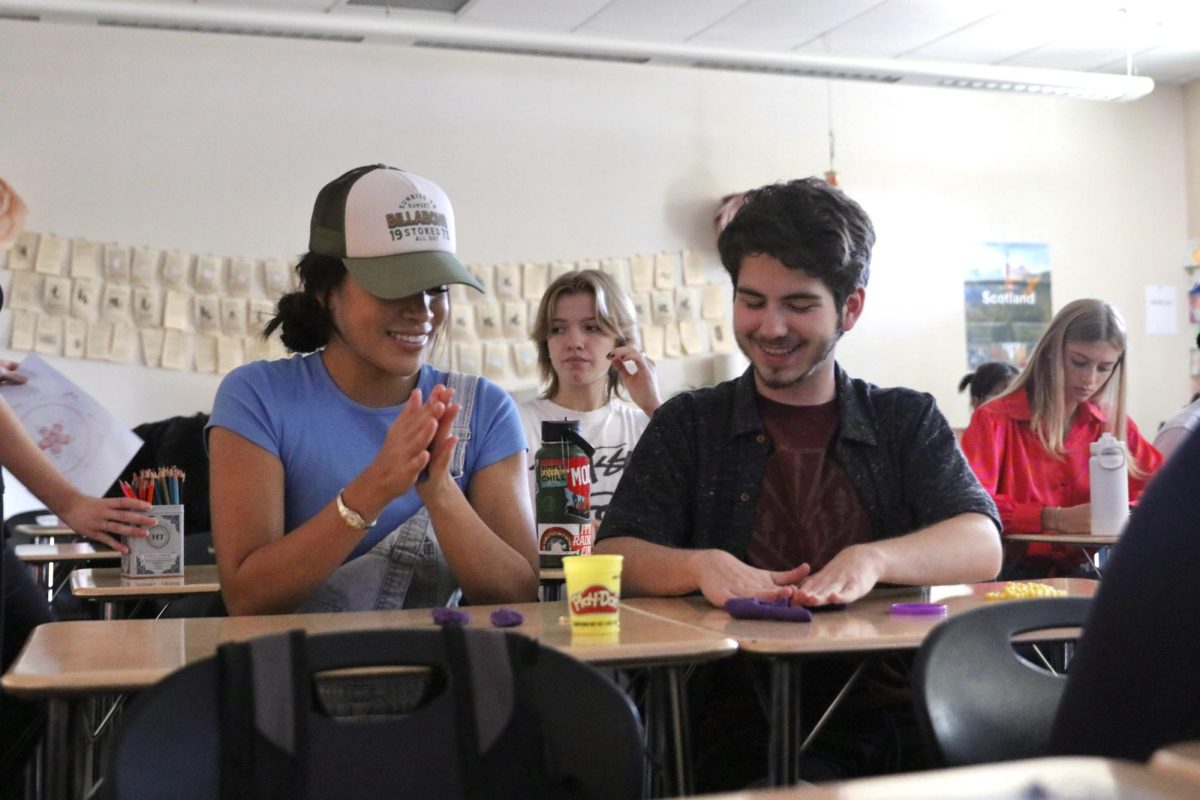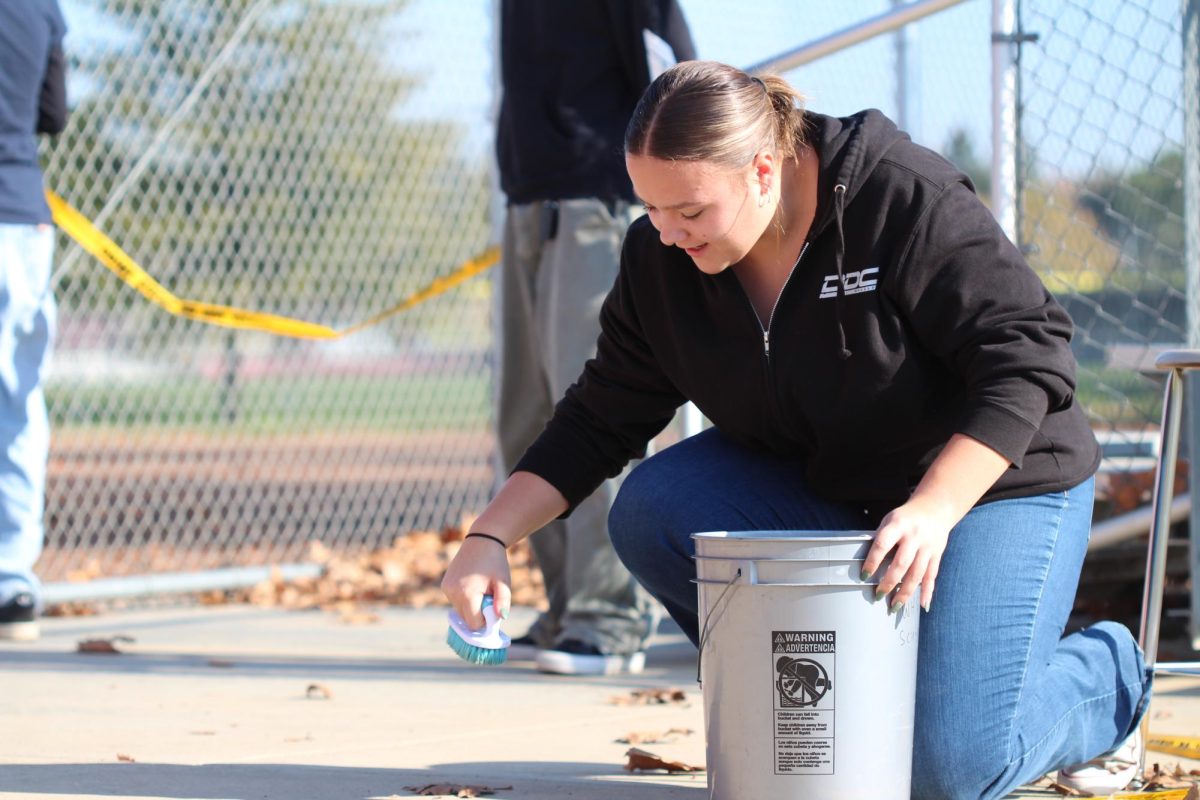After COVID-19 influenced shutdowns of schools and public areas while simultaneously disrupting the daily lives of many, adolescents, especially, were in the epicenter of vulnerability. The effects of the virus placed teens and young adults’ mental health at the forefront of concern for many.
With this in mind, Mrs. Emilie Cavolt had been gaining materials and insight from a positive psychology class and The Science of Well-Being class at Yale University. As a result, she proposed a new class called mindfulness, which became part of the elective offerings in the 2021-22 school year.
The process of implementing a mindfulness class consisted of countless hours of convincing and starting. Through proposing to a committee based on various teachers, the RUSD School Board, admin and other outside sources, Cavolt persisted on the opportunity for a class that would benefit students’ perceptions and allow them to unlock true happiness. She started the process before the pandemic, and it took years to bring it to fruition.
“Mindfulness is being aware of yourself in the present moment, and it’s really being connected to that. For me, I think that’s so important because we are rarely in the present,” Cavolt said. “Our brains are programmed to think future and past.”
Focusing attentively on the body and mind itself requires several months of practice in order for the brain to begin rewiring and the body to start feeling physical and mental improvements. Mindfulness specifically works towards being able to carefully respond to road-blocks that are brought forward in life.
“Life is never easy and always opposes challenges. So, being able to know how to handle those challenges personally after practicing mindfulness will make for an overall happier life,” Cavolt said. “It’s really training your brain to actually be in the present, just like an athlete would train their body for something.”
August Donios said she finds mindfulness to be a needed break in her day after juggling the rigor of college preparatory classes and applications.
“Since I’m a senior and the college application process is in the works, I have a lot of stuff to do,” Donios said. “I feel like mindfulness gives me the ability to take that break and find new ways on how to cope and become more calm.”
During the first 10 minutes of each class immediately following the bell, the “arrival” is set in motion. The “arrival” is reserved for students to focus on themselves and their creative outlet by participating in a meaningful mindfulness activity of their choice. From journaling, coloring pages out of coloring books, painting on the Zen boards and simply resting, the time provided is for students to tune into present-moment awareness without the distraction from other coursework and technology.“It’s a time to relax and collect yourself in the moment, there’s no stressing about homework for certain classes,” Austin Woolley said. “I personally like to read in this time and make some tea. Reading is helpful in getting yourself ready to think and grow as a person and that’s what mindfulness is really about.”
In her classroom, D-7, Cavolt has a tea bar in the corner of the room. Students are encouraged and permitted to bring and leave mugs for when they’re craving a warm drink.
Within the curriculum, students learn psychology-based facts and scientific insight towards making for a happier lifestyle. From learning about the function of the brain’s amygdala to understanding the history of the early sketches of meditation with the monks from the “Headspace Guide to Meditation” Netflix series, students learn information beyond the mindfulness skills they’re taught to implement into their lives. They also take “mindful walks” around campus and on the trails outside of the school and participate in “Mindful Mondays,” a randomly selected activity that a student brainstormed for the articulation schedule 70-minute class.
“I know that when people think about mindfulness, it could seem really silly. I remember when I told my dad I was going to take [the class,] he was like ‘oh, are you going to do goat yoga and open your third eye,’ which I thought was funny,” Hadley Buffum said. “It’s really interesting, and there’s a lot of scientific facts and learning involved with it but it’s also just a really fun class and it’s really nice to be able to just chill and not have to worry about anything from your other classes or life outside [of the classroom.]”
Compared to other courses, the grading system slightly differs from class to class. As long as students actively participate in their “arrival” and class discussion and complete projects, their grade is ultimately their decision. With ample time and negotiable due dates, the class is mainly focused on managing emotions and understanding mindful skills that anyone can carry out, regardless of what a student’s future may look like.
“You’re mainly just working on yourself. There’s not really many assignments,” Donios said. “The whole grading process is [more focused] on you talking and looking deeper into yourself, what you’re going through and how to work on it. My favorite project that we’ve done so far would have to be all the art sections we do because it’s very expressive and creative. There’s a bunch of different ways that people can interpret art.”
Outside of the classroom, students are encouraged to continue to practice mindfulness techniques and follow through with guided meditations in order to enhance their relationship with themselves. Cavolt said it not only has a positive impact on mental and physical health, it also promotes individual well-being. “I’ve been practicing a lot of the gratitude prompts and brainstorming that we’ve been doing in class and thinking about all of the things that [I’m] grateful for. I do that a lot,” Buffum said. “I’ve also been trying to breathe more through my emotions lately.”
At home, Cavolt has made mindfulness an integral part of her everyday life. Whether it’s for a few minutes or a few hours, she prioritizes the several practices she’s learned from Yale and implements her own activities in the melting pot.
“[I practice techniques with] my two little kids. I try to do a little three minute meditation with them every morning – doesn’t always happen – but I’m trying,” Cavolt said. “I like riding my bike and doing yoga, too.”
While Cavolt simultaneously teaches several AP Language Arts class periods, the mindfulness class is a drastic shift in curriculum, learning, implementation and rigor. After three years of fully understanding the significance of mindfulness practices, Cavolt hopes to merge similar applications into her AP course.
“In my AP Language Arts class, I want to try to do more meditation; that’s my goal this year is to work that in. I haven’t yet, but I’m going to start this week. It’s one thing, you know, to teach academics where students will learn how to be better writers and thinkers, but really I think what’s important is students learning how to manage their emotions, how to be happier and how to function in this world. So to me, that’s what makes this class so special,” Cavolt said. “It’s a skill that you can carry out no matter what you do in your future.”
by ALYSSA FOLMER










